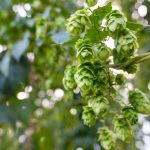
COMMON AGRICULTURAL POLICY (CAP): HISTORY AND APPLICATIONS
Introduction
There are currently 10 million farms in the European Union, with a total of 22 million people working in this sector. In other words, the countryside and natural resources offer a wide variety of jobs linked to them, including machinery, buildings, fuel, fertilisers and veterinary care for animals, among others. There are a number of downstream activities, including food preparation, processing and packaging, storage and transport. Due to the number of farms within the territory, the EU holds one of the highest positions in relation to world production and export of agri-food products.
One of the main challenges facing agriculture is the need to ensure, at all times, a balance between food production and the maintenance of ecosystems and natural resources, avoiding a decline and ensuring the preservation of the biodiversity of the environment.
The CAP (Common Agricultural Policy) of the European Union for both the agricultural and livestock sectors was created in 1962 with the aim of coordinating the different agricultural policies of each of the member states. Its main objective, in general terms, is to move towards a common market, while also managing to protect a vulnerable sector against the action of various external factors, such as the climate. One of its main lines of work is based on the promotion of productivity through a series of technical improvements, which guarantee production levels and, therefore, the supply of raw materials in all European countries. Its objectives also include contributing to the fight against climate change and the sustainable management of natural resources; the conservation of landscapes and rural areas throughout the territory; and the maintenance of the rural economy, promoting employment in agriculture, agri-food industries and associated sectors.
In addition, the aim is to defend the interests of consumers and producers by regulating supply and demand, thereby stabilising prices through the application of measures such as the purchase of surplus production. For producers, the CAP offers direct aid and financing for certain projects to develop the rural economy.
The CAP budget is distributed between two funds belonging to the European Commission, namely the European Agricultural Guarantee Fund (EAGF), which supports farmers directly by financing measures to stabilise the market, and the European Agricultural Fund for Rural Development (EAFRD), which is more related to rural development projects. Since agriculture and consumer protection or the environment are shared competences between the EU and the different member states, Brussels has priority in decision-making, which it can delegate to local governments in certain situations. Although payments are made by the Commission, it is the member states that are responsible for transferring aid to individual projects.
The Commission regularly consults civil dialogue groups and agricultural committees, thus developing better policies and regulations for the sector, appropriate to the situation at the time. Expert groups providing expertise include the Agricultural Market Task Force (AMTF), which deals with unfair trade practices. With regard to proposed new legislation, it carries out impact assessments, which examine the need for measures as well as the potential impact of their implementation.
Opinion polls, known as Eurobarometer, are regularly published on issues involving Europeans, agriculture and the CAP, thus obtaining highly relevant information on the public’s perception of the CAP and its actions, such as the support provided, results, quality and environmental issues.
History
The CAP emerged after the Second World War, in an economic environment marked by food shortages, which justified the need to establish an interventionist and productivist policy, in an attempt to achieve a total food supply for society at affordable prices, while guaranteeing an adequate standard of living for the rural population dedicated to agricultural production. For all these reasons, the CAP focused primarily on the establishment of price and market policy measures, the results of which were observed over the following decades, transforming a deficit situation into a surplus one.
In the 1980s, agricultural expenditure, due to the cost of surpluses, was skyrocketing. The application of intervention measures, including private storage aid and public purchases and export subsidies, in order to dispose of all surplus produce on the international market were the most costly of all. For this reason, the first major reform of the CAP was unleashed in 1992 (the McSharry reform), which sought to alleviate the imbalances between supply and demand and the growing agricultural expenditure. The main changes that were made were the beginning of the transition from production-linked support to income support for farmers, through payments per hectare or head of livestock in the case of livestock farms; and the establishment of measures for the improvement of agricultural structures.
The food crises of the 1990s, the enlargement of the CEECs and the Cork Conference on Rural Development were the triggers for a new reform, Agenda 2000, which made progress in establishing direct income support, lowering institutional prices, increasing the competitiveness of European agriculture and establishing rural development policy as the second pillar of the CAP.
In 2003, in September, the European Union consolidated a new system of direct aid to farmers, known as the Single Payment. According to this system, farmers are assigned aid rights, which are calculated based on the aid received in a period of time taken as a reference, regardless of the production levels that will be reached in the future. In Spain, this reform did not arrive until 2006 and sought to minimise the risks of decoupling aid whose production activity could be affected at some point.
New reforms were introduced in 2008 and 2013. The first of these was proposed due to the need to provide greater social legitimacy to aid, as well as more efficient management of budgetary resources. Progress continues to be made in introducing new challenges that take into account factors such as climate change, biodiversity, energy and water management. The June 2013 reform, which was presented by the Commission under the title “The CAP towards 2020: meeting the challenges of food, natural and territorial resources” in November 2010, sets out new objectives for better targeting of support to active farmers, while giving greater importance to environmental aspects, establishing specific payments linked to this. These aids related to environmental conservation were baptised “greening” and are received in addition to the basic payment, which is why they can be considered as a supplement to the basic aid. In order to receive this subsidy, farmers entitled to payment under the basic scheme must comply with a series of requirements on all their eligible hectares, namely three environmental practices: crop diversification, maintenance of existing permanent pastures and the establishment of areas of ecological interest on farms. You can find a publication on this topic in our blog.
Application
First of all, we would like to point out that although for this year the deadline for applying for aid was set from 1 February 2020 to 30 April, due to the current situation the Ministry of Agriculture, Fisheries and Food has extended the deadline to 15 May, in order to make it as easy as possible to submit the application. However, applications will be accepted up to 25 calendar days after the deadline. However, except in cases of force majeure and exceptional circumstances, in the event of such a delay, the amounts will be reduced by 1% for each working day after the deadline. If the delay exceeds this period, the application shall be considered inadmissible from the outset. The causes of force majeure or exceptional circumstances of application include:
Death of the beneficiary or disappearance of the beneficiary.
Long-term incapacity for work of the beneficiary.
Serious natural disaster or adverse meteorological phenomenon comparable to a natural disaster which has seriously affected the agricultural or forestry land of the holding, recognised by the competent authority.
Accidental destruction of the holding’s livestock buildings.
Epizootic disease, recognised by the competent authority, which has affected part or all of the livestock on the holding of the beneficiary.
Plant pest or plant disease caused by pathogenic micro-organisms or environmental factors, recognised by the competent authority, which has affected part or all of the crops on the holding or, where applicable, the beneficiary’s afforestation.
Exceptional circumstances related to the design of the national programme for the promotion of specific agricultural activities that bring greater agri-environmental benefits in certain species of the nut sector established in 2013 in Royal Decree 202/2012, of 23 January, which have prevented the collection of this aid in that year due to the existence of a requirement for plot rotation that prevented the application for such aid on certain areas in that campaign.
Expropriation of all or a significant part of the holding, if this expropriation was not foreseeable on the day the application was submitted.
All the information corresponding to the presentation of these applications within the community of Castilla y León is set out below.
The following aids, payments and procedures are called for the 2020/2021 campaign:
Agri-environmental aid, organic farming, aid for mountain areas and for the maintenance of forested areas.
Direct payments to agriculture and livestock farming.
Application for transfer of basic payment entitlements.
Application for basic payment entitlements to the national reserve.
Application for modification of SIGPAC.
Selection of users of the Castilla y León advisory system for the 2019/2020 agricultural campaign.
Updating of the Castile-Leon Register of agricultural holdings.
The persons who can apply for all the aforementioned elements are holders of agricultural holdings located in the community of Castilla y León, as long as they have production units that are eligible for direct aid from the Common Agricultural Policy, financed by EAGF funds, as well as aid assimilated to the Integrated Management and Control System financed by EAFRD funds.
The holder of the holding is solely responsible for ensuring that the information declared in his application is true in all respects, in particular as regards eligibility for the aid, the situation regarding compliance with the requirements of active farmer and the performance of the agricultural activity. If this is not complied with, penalties will be applied as established in the integrated management and control system of the Community regulations.
The Single Application for 2020 comprises the application for the basic payment, the payment for environmentally beneficial practices and the payment for young farmers. The associated payments for farmers include protein crops, nuts and locust beans, quality pulses and, finally, sugar beet. Livestock farmers include cattle, suckler, milk and fattening, sheep and goat farmers, as well as those farmers with special entitlements in 2014 without eligible hectares.
Producers with agricultural holdings located in Castilla y León must submit a single aid application (“solicitud única”), which must be addressed to the Director General for Community Agricultural Policy, in accordance with the model forms that can be found in Annex 1 of the report “Convocatoria: orden de 28 de enero de 2020, de la Consejería de Agricultura, Ganadería y Desarrollo Rural (Extracto publicado en BOCyL 31-1-2020)”, within the electronic headquarters of the Junta de Castilla y León. The owners of forested areas of the measure of investments in the development of forest areas in the period 2014-2020 who wish to apply for aid for the maintenance of afforestation shall submit the single application mentioned above addressed to the Director General of Natural Heritage and Forestry Policy. This single application must include:
Communications of transfer of basic payment entitlements, where applicable.
Application for basic payment entitlements to the national reserve, where applicable.
Application for modification of the SIGPAC, if applicable.
Rural development applications for commitments acquired in an Autonomous Community other than Castilla y León.
Communication of updating of data to the Register of agricultural holdings of Castilla y León, if applicable.
Application for the provision of advisory services.
Application to benefit from the crop diversification derogation, if applicable.
Express waiver to modify the period of validity of the contract for the agri-environmental and climate or organic farming measure signed in 2015, consisting of the extension for two years or more, in the manner established in the Resolution of 23 May 2019, of the Directorate-General for Community Agricultural Policy (BOCyL no. 99, of 27 May).
When the application is to be submitted electronically, it must be signed by the producer. However, the applicant or his representative may authorise another entity to sign the application electronically, provided that these entities previously notify their authorisation as such through the computer application “management of external users of the information service”. The telematic presentation of the application, together with the rest of the documentation that will be digitalised and provided as files attached to it, will not prejudice the possibility that the administration may require the individual to show the original document or information under the terms established in the basic regulations of the common administrative procedure. In short, applications submitted in this way will produce the same legal effects as those submitted in person in accordance with the regulations governing the common administrative procedure. The electronic register will issue a receipt confirming receipt of the corresponding documentation, consisting of a copy of the same, which in turn includes the date, time and registration number. Failure to receive the confirmation message or the appearance of an error message means that the receipt has not been received correctly, so the submission must be made again at another time.
For more information, please visit the electronic office of the Junta de Castilla y Leon, which you can find at the link in the image.








